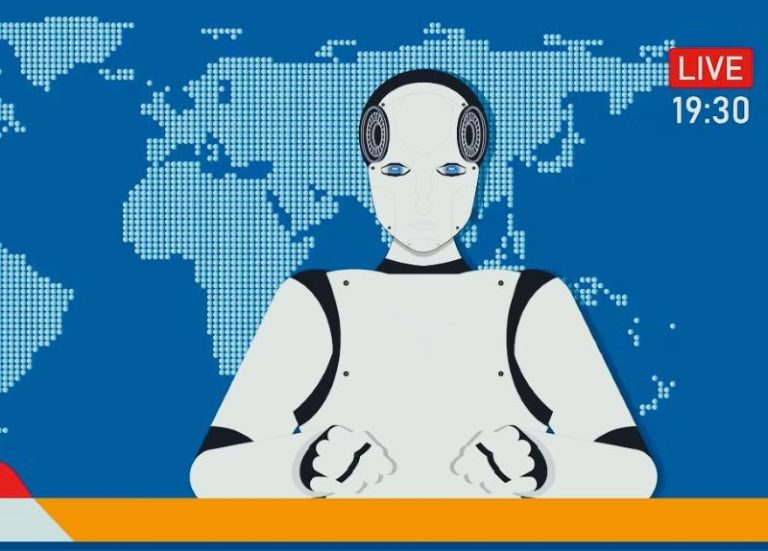

Each public feud, leaked chat, or ideological split chips away at the image of a seamless populist front. The cracks are widening not because MAGA’s enemies are closing in, but because its allies are pushing against one another.

By Matthew A. McIntosh
Public Historian
Brewminate
Introduction
Georgia Rep. Marjorie Taylor Greene unleashed a blistering public critique of House Speaker Mike Johnson, accusing him of hypocrisy for brushing aside serious allegations against Rep. Cory Mills. Greene highlighted Johnson’s role in the earlier expulsion of George Santos and demanded accountability, further accusing Republican leadership of failing to act on Affordable Care Act subsidy expiration.
That confrontation is far from isolated. Around the same time, insiders in Trump’s orbit are waging a bitter dispute over Jeffrey Epstein-related disclosures, with Dan Bongino issuing ultimatums to Attorney General Pam Bondi over delayed or absent revelations. The Daily Beast Meanwhile, a massive leak of Telegram chats from Young Republican leaders exposed racist, violent, and antisemitic rhetoric among party insiders, sending shockwaves through MAGA-aligned circles and undermining claims of a unified conservative resurgence. Wikipedia
These episodes suggest more than the habitual skirmishes of party politics. They point to emerging fault lines in the MAGA coalition: between leaders and dissidents, between activist expectations and political realities, and between competing visions of what Trumpism should mean. Here we map the flashpoints: personality clashes, ideological splits, organizational breakdowns, and ask whether this is mere turbulence or the beginning of a deeper fracture within MAGA.
The Key Flashpoints
What had once looked like a disciplined movement marching in lockstep behind Donald Trump now appears increasingly prone to friendly fire. The most visible clashes have unfolded in Congress, where Marjorie Taylor Greene has taken aim at Republican leadership. She has criticized House Speaker Mike Johnson for a variety of issues, primarily focusing on a perceived lack of Republican strategy, leadership weaknesses, and specific policy decisions. She has accused him of lacking a plan to end the government shutdown, being “weak” compared to Republican women, and failing to adequately address expiring health care tax credits. Additionally, Greene has criticized Johnson for past actions, such as overseeing the expulsion of George Santos. Santos recently had his sentence commuted by Trump. The feud turned personal when both sides publicly traded accusations of betrayal. The Daily Beast described it as a “pointless spat,” but the spectacle revealed something deeper: a growing willingness among Trump’s most loyal allies to turn on one another.
The turmoil has not been confined to Capitol Hill. Inside Trump’s extended media ecosystem, tensions are mounting over conspiracy-driven expectations that fail to materialize. When right-wing commentator Dan Bongino accused former Florida Attorney General Pam Bondi of mishandling the long-hyped release of Jeffrey Epstein-related documents, the dispute escalated into a public ultimatum. Bongino warned he would walk away unless Bondi did, accusing her of misleading the base. The episode, reported by The Daily Beast, illustrated how grievance and distrust now circulate within the very channels that once unified MAGA’s media infrastructure.
The movement’s internal fissures are also ideological. Trump’s response to Israel’s strikes on Iran triggered intense arguments inside the MAGA camp. “America First” isolationists warned against foreign entanglements, while nationalist hawks demanded a show of strength. That split has echoed through conservative media and Congress alike, exposing deep uncertainty about how to reconcile Trump’s transactional foreign policy with the base’s growing appetite for confrontation abroad.
Meanwhile, the exposure of extremist rhetoric inside a private Young Republican group chat dealt another blow to the movement’s credibility. The leaked messages, filled with racist, antisemitic, and violent language, forced senior party figures to condemn the content while others dismissed it as overblown. The episode highlighted how far-right activism and mainstream party politics have blurred, an uncomfortable reality that Trump-era Republicans struggle to control.
Together, these moments reveal a pattern. The MAGA coalition is no longer simply battling its opponents; it is wrestling with its own identity. As power concentrates once again around Trump’s reelection machine, the centrifugal pull of ambition, ideology, and ego threatens to overwhelm the gravitational force that once kept everyone in orbit.
Signs This Could Be More Than Temporary Friction
Every campaign cycle brings internal squabbles, but the current MAGA rifts carry a different weight. What distinguishes these from routine party brawls is their public intensity and their origins within Trump’s most faithful base. In past years, disputes were often smoothed over by shared hostility toward the establishment or the media. Now the antagonists are each other.
Trump’s coalition is beginning to split along strategic lines, particularly around foreign policy. The magazine described “a movement defined less by its ideology than by its loyalty,” now struggling to define what it actually stands for. The old unifier, Trump himself, still commands devotion, but even his word no longer instantly settles disputes about how to wield power or interpret “America First.”
These fights are not confined to policy. They reflect the erosion of trust between MAGA’s power centers. Disagreements that once played out privately are now live-streamed on social media, as influencers and lawmakers court audiences by attacking fellow loyalists. The public feuds between Greene and Johnson, or between Bongino and Bondi, show how the culture of constant outrage that once targeted opponents is now being redirected inward.
Financial and organizational stresses add to the volatility. State Republican parties in places like Michigan and Arizona have already fractured over leadership disputes, with Trump-aligned officials refusing to accept removals or election losses. Politico reported that these internal breakdowns have strained local fundraising and confused voters about who actually represents the GOP’s grassroots. The same pattern, rhetorical unity at the top, disarray below, could weaken turnout in swing states that Trump needs most.
Finally, the movement’s own media infrastructure, once a powerful echo chamber, now amplifies internal suspicion. Competing influencers and podcasters accuse one another of “controlled opposition,” and smaller MAGA factions are increasingly convinced that betrayal lurks within their ranks. This feedback loop of distrust is what makes the present moment so combustible: it transforms internal disagreement into moral panic, and every disagreement becomes proof of disloyalty.
Counterarguments and Constraints
For all the noise of MAGA’s internal feuds, talk of collapse may be premature. The same traits that make the movement volatile also make it resilient. Trump’s grip over his base remains firm, and loyalty to him continues to eclipse loyalty to the Republican Party itself. The former president still commands massive rallies, saturates right-wing media, and dominates the primary field. As Reuters recently reported, even high-profile GOP figures critical of his tactics find themselves unable to challenge his control without alienating their own voters. That gravitational pull limits how far any internal schism can truly spread.
There is also the matter of shared incentives. For many Republican lawmakers, MAGA’s populist energy remains their strongest electoral asset. The brand still drives small-dollar donations, fuels conservative media ratings, and keeps the party’s most reliable voters engaged. Even figures who privately express frustration with Trump’s unpredictability are reluctant to break ranks in public. The coalition’s factions “depend on one another for relevance,” creating a self-reinforcing cycle of dependence that discourages open revolt.
External opposition also tends to bind the movement together. Every criminal case, congressional investigation, or media exposé targeting Trump has historically triggered a surge in fundraising and solidarity. The more he is attacked, the more his supporters close ranks. That reflex has repeatedly turned potential setbacks into moments of mobilization. It is a pattern seen in populist movements worldwide: persecution, real or perceived, becomes the lifeblood of unity.
Finally, Trump’s narrative control remains unmatched. His ability to redefine controversies, whether by labeling them “witch hunts” or reframing infighting as proof of loyalty tests, allows him to absorb internal shocks that would shatter a traditional political coalition. The question, then, is not whether the movement can survive conflict, but whether its constant cycle of outrage can still translate into governing coherence. Stability may be less the MAGA model than perpetual combat.
What to Watch Going Forward
If MAGA’s cohesion is truly weakening, the next year will reveal it. The pressure points are already visible. Each centers on whether the movement can keep its diverse factions—religious populists, nationalist hawks, libertarians, and conspiratorial influencers—pulling in the same direction.
The first signal to watch is whether any major figure publicly breaks from Trump. Most critics remain on the fringes, but that could change if Trump’s legal or foreign policy decisions alienate a key bloc. Several high-profile MAGA donors and strategists privately warned of a “massive schism” over his response to Israeli airstrikes on Iran. If that rift widens into open rebellion, it could mark the first real fracture of Trump’s coalition.
The second sign lies in coordination and money. Politico has reported persistent breakdowns in state-level GOP operations where MAGA-aligned officials refuse to concede leadership disputes. Should these fights intensify before the 2026 midterms, they could drain resources from key battlegrounds, leaving the party less able to mobilize its voters.
A third indicator is rhetorical. When MAGA-aligned media figures begin turning their outrage inward, accusing one another of betrayal or softening on “the mission,” the sense of common identity erodes. The Dan Bongino–Pam Bondi feud was one example. Similar divisions could spread as influencers compete for followers and funding in an attention economy that rewards internal drama.
Finally, the broadest test will be emotional rather than structural. The MAGA movement has thrived on the sense of being an insurgency, but as it continues to dominate the Republican Party and occupy the White House again under Trump, that identity becomes harder to sustain. Maintaining grievance politics while holding power creates contradictions that can only stretch so far before they snap.
Conclusion
For now, talk of a full MAGA implosion may overstate the case. The movement still commands unmatched influence within the Republican Party, and Trump remains its magnetic center. But beneath that dominance, the strain is visible. Each public feud, leaked chat, or ideological split chips away at the image of a seamless populist front. The cracks are widening not because MAGA’s enemies are closing in, but because its allies are pushing against one another.
Political movements built around a single leader can survive extraordinary turbulence, but they rarely institutionalize stability. Trump’s command is both MAGA’s strength and its vulnerability: it unites his followers while preventing any durable structure beneath him from forming. The coalition endures through loyalty rather than consensus, and loyalty is a fragile currency in politics.
Whether this internal friction becomes a full fracture will depend on how long Trump can maintain control over a movement that increasingly argues about what he stands for. The danger for MAGA is not that it will vanish, but that it will keep fighting itself in public while the country moves on.
For now, the movement still roars. But the louder the noise inside its own walls grows, the harder it becomes to tell whether it is a rallying cry, or an echo.
Originally published by Brewminate, 10.22.2025, under the terms of a Creative Commons Attribution-NonCommercial-NoDerivatives 4.0 International license.


